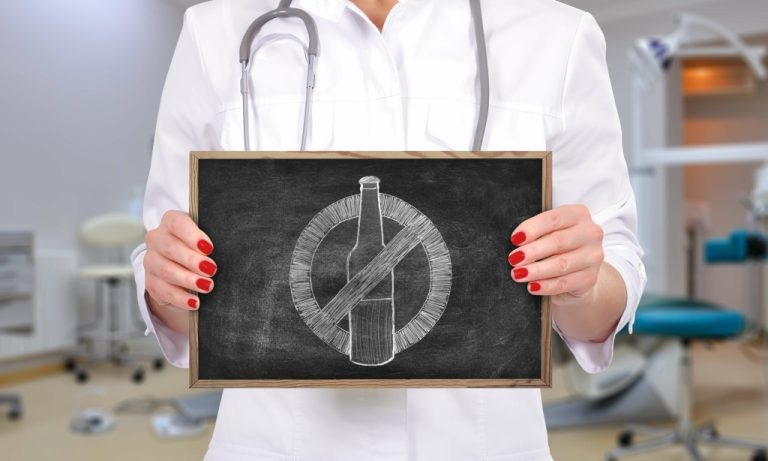We further found that regulation of dopamine release by D2/3 dopamine autoreceptors was altered by long-term alcohol consumption in male, but not female, rhesus macaques regardless of abstinence status. These results are largely in agreement with the literature, though some disparities exist. For example, long-term alcohol self-administration resulted in decreased dopamine uptake rates in the dorsolateral caudate of male cynomolgus macaques [22, 24].
People energized by alcohol are genetically predisposed to drink more heavily.
There are conflicting reports in this regard with different population groups having different alleles as risk factors. Moreover, new alleles are also being discovered wherein an association exists between the stated allele and alcoholism. As a reviewer, I would suggest one possible way to overcome much of the http://sisalya.ru/11789-samye-neobychnye-razvlecheniya-v-mire-video.html conflicting reports would be to perform studies with a much larger sample size. Such efforts are hampered by inadequate funding, so collaborative efforts on a national scale, combining the skills and infrastructures of different hospitals and psychiatric care centers could potentially overcome this problem.

Short-term effects
All of them function both individually and interactively as G-protein coupled receptors. The delta receptor is concentrated in the prefrontal cortex, the hippocampus and the cerebellum, the same regions which had lowered activity in the PET scanner. Like in The Hangover, where a wild night of partying clouded the memory of the previous evening’s events, it took some time, but the pieces of this story were slowly coming together. One of the less common types of GABA contains a delta subunit (they are all labeled with Greek letters). In the past ten years, researchers began suspecting that the delta receptor might differ from other GABA receptors.

Effects of Imbalanced Dopamine Levels

Furthermore, the trend toward decreased dopamine release in the males with no abstinence might have become significant had those subjects been put through abstinence periods like the male subjects in Cohort 3 of this study. Reinforcement appears to be regulated by the interaction of multiple neurotransmitter and neuromodulatory systems. Among the neurotransmitter systems linked to the reinforcing effects of alcohol are dopamine, endogenous opiates (i.e., morphinelike neurotransmitters), GABA, serotonin, and glutamate acting at the NMDA receptor (Koob 1996). Complex interactions between these neurotransmitter systems are likely to be important for the development and maintenance of alcohol-seeking behaviors.
How does the brain change as AUD develops?
- In clinical trials in Sweden, alcohol-dependent patients who received an experimental drug called OSU6162, which lowers dopamine levels in rats, experienced significantly reduced alcohol cravings.
- Strikingly, mice that display inhibitory activity in this circuit during the first alcohol exposure are more likely to develop compulsive drinking behavior.
- For example, the activity of mRNA binding protein fragile-X mental retardation protein (Fmrp), which plays an important role in translation [47], is enhanced by alcohol in the hippocampus of mice resulting in alteration in the expression of synaptic proteins [48].
A reward (e.g., food) usually is a complex stimulus having primary (e.g., calories) as well as secondary (e.g., taste and smell) motivational properties. Interestingly, those with the poorest impulse control — who would be considered most at risk of relapse after a period of sobriety — responded best to the treatment. Dopamine plays many important roles in the body, affecting moods, memory and sensations of pleasure and pain.
- This coherent FC relationship across AB tasks is also consistent with the significant correlations between behavioral measures of AB.
- Alcohol-dependent activation of mTORC2 in the DMS promotes F-actin assembly, the formation for mature spines and alcohol intake [59].
- As in the case of GABAA receptors, however, these excitatory receptors are relatively insensitive to intoxicating concentrations of alcohol under some experimental conditions (Wright et al. 1996), underscoring the need for more research in this area.
- The physical structure of the brain remains constant, but the addition of a tiny chemical drastically alters brain function and ultimately behavior.
- A broad consensus does exist as to the involvement of various neurotransmitter pathways, but defining the precise causative alleles or groups of alleles in the genes of the particular neurotransmitter pathways involved in alcoholism is a challenge to be overcome in the coming years.

So, the alcohol builds up quite quickly,” explains addiction psychiatrist Akhil Anand, MD. 1Nerve cells (i.e., neurons) communicate by releasing chemical messengers called neurotransmitters, which bind to receptor proteins on the surface of other neurons. For https://mastermason.info/wedding-planning-advice-for-throwing-the-perfect-wedding/ definitions of technical terms used in this article, see central glossary, pp. 177–179. Unlock a secret to managing ADHD with a “dopamenu” – a creative way to boost dopamine levels and transform your daily routine for better focus, motivation, and joy.
Dopamine D2/3 autoreceptor sensitivity was decreased in chronic alcohol self-administering male macaques
- As reviewed above, the acute reinforcing effects of addictive drugs, including alcohol, could be mediated by increased dopamine release in the NAc, activating dopamine D2 receptors [71, 27, 30].
- Dopamine also activates memory circuits in other parts of the brain that remember this pleasant experience and leave you thirsting for more.
- Accordingly, the macaques in Cohort 3 underwent three, 1-month long abstinent periods during the experiment.
- At the highest level of complexity are neural pathways, sequences of neurons communicating through several brain regions (Shepherd 1994).
Our team is growing all the time, so we’re always on the lookout for smart people who want to help us reshape the world of scientific publishing. Alcohol reaches your brain in only five minutes, and starts to affect you within 10 minutes. Joshua Gowin, Ph.D., earned his doctorate in behavioral neuroscience at the University of Texas Health Science Center in Houston. Alcohol also decreases energy consumption in the cerebellum, a brain structure that coordinates motor activity. With a cerebellum running at half-speed, it would be hard to walk a straight line or operate heavy machinery. We are grateful to the Cuzon Carlson and Grant laboratories for their technical assistance and for hosting us while completing these studies.
Gene expression of cholinergic interneuron markers and several nAChR subunits was not changed following chronic alcohol consumption and abstinence (D, E). “We found that people vulnerable to developing alcoholism experienced an unusually large brain dopamine response when they took a drink,” said Leyton. “This large response might energize reward-seeking behaviors and counteract the sedative effects of alcohol. Conversely, people who experience minimal dopamine release when they drink might find the sedative effects of alcohol especially pronounced.” In line with the hypothesis that a partial dopamine D2 agonist would block the reinforcing effects of alcohol, aripiprazole attenuates alcohol’s ability to increase the locomotor activity in mice [178, 179](an indirect measure of activation of the mesolimbic dopamine system).
Spending time with loved ones and engaging in social activities can increase dopamine levels and enhance feelings of well-being. Practices like meditation and mindfulness can increase dopamine levels, reduce stress, and improve overall mental health. The results of the aforementioned study was therefore in complete contrast to the results published by[60] which found a positive http://simonstonehall.com/wordpress/giftcards/ correlation of the short (S) allele with binge-drinking behavior, drinking more alcohol per occasion, as well as drinking to get drunk more often. Likewise, in the study carried out by[59] which aimed at understanding the role of 5’-HTTLPR polymorphism with risky alcohol use in adolescence, there was no correlation with drinking to cope motives and the 5’-HTTLPR polymorphism.

